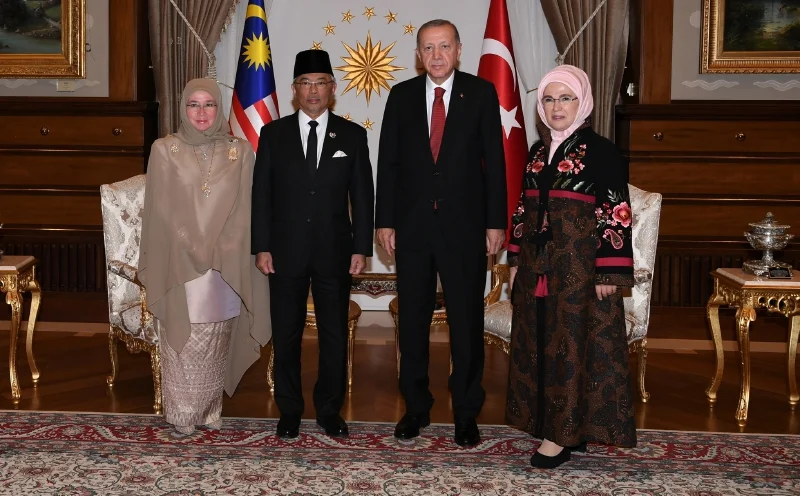As Malaysia enters another “full lockdown’ in June 2021 due to the worsening Covid-19 crisis, and still recovering from economic setbacks posed by the Covid-19 global pandemic, defence procurement and capability-building for the Malaysian Armed Forces (MAF) may be put on a back burner. Although the defence sector and the MAF have received an almost similar budget for 2021 (RM16 billion) as in 2020, the key question is will next year’s, or the following years’, defence budget be cut? In times of financial austerity, the defence sector usually gets the first cut to offset some budgetary trimmings. Nonetheless, despite the possible economic pressures posed by the global Covid-19 pandemic and the importance of continuous financial support for the health sector, the defence sector must not be side-lined.
Although the world is grappling with a global Covid-19 pandemic, strategic rivalries and power struggles continued in the world and regionally. For examples, in 2020 alone, we have seen wars and conflicts continue to be played out while Covid-19 pandemic rages on such as the Nagorno-Karabakh War and Sino-Indian border conflict at the Galwan River valley. Strategic rivalries between the US, Russia and China continue to simmer globally. This great power competition will have impact on Malaysia’s strategic stability. China has also continued its assertive maritime operations in the South China Sea. China claims almost the entire South China Sea.
Malaysia has important national interests in the South China Sea that must be safeguarded. Peninsular Malaysia is separated from East Malaysia by the South China Sea, and the maintaining and control of the sea and air corridors between these two land masses are of vital importance in peace and war. Malaysia also has overlapping claims in the South China Sea and Spratly Islands with other states. Malaysia has immense economic interests via its Exclusive Economic Zone (EEZ) and continental shelf claims in the South China Sea as stipulated in the United Nations Convention on the Laws of the Sea (UNCLOS). Most of Malaysia’s oil and gas industries are located offshore in Malaysia’s territorial waters and EEZs. The fishing industry is also important for Malaysia as it contributed an average of 12% of Malaysia’s annual GDP for the past 5 years.
However, there were attempts to encroach into Malaysia’s maritime zone in the South China Sea. For example, last year between 15-28 April 2020, China had sent a government survey ship, the Haiyang Dizhi 8 with 10 coast guard and maritime militia vessels to shadow a Petronas contracted exploration ship, the West Cappella, about 324 kilometres from the Malaysian coast. This prompted the US Navy to send a small flotilla of combat vessels to the scene to check on the Chinese maritime operations. This small flotilla was later joined by a RAN frigate HMAS Parramatta. After spending a few days in the area, the Chinese, US, and Australian vessels quietly moved out, thus providing an uneventful ending to the standoff.
Malaysia also loses about RM6 billion annually to Illegal, Unreported and Unregulated (IUU) fishing, according to the Department of Fisheries, Malaysia. The vast maritime areas pose serious challenges for the marine unit of the Royal Malaysian Police (RMP) and the Malaysian Maritime Enforcement Agency (MMEA) to police. The MAF, especially the Royal Malaysian Navy (RMN) and Royal Malaysian Air Force (RMAF), are roped in to jointly patrol and police Malaysia’s maritime areas.
The South China Sea situation continues to be tense when on 7 March this year, a large armada of more than 200 Chinese fishing boats were docked and moored on Whitsun Reef (or Julian Felipe Reef) close to the western Philippine province of Palawan in the South China Sea. On 31 May 2021 the People’s Liberation Army Air Force (PLAAF) flew a squadron-sized of multi role strategic airlifters, consisting of Ilyushin Il-76 and Xian Y-20 aircraft, over Malaysia’s Exclusive Economic Zone (EEZ) waters and the South Luconia Shoals (Beting Pattingi Ali), and reached about 60 miles off Sarawak’s coast. According to the Royal Malaysian Air Force (RMAF), the PLAAF aircraft flew in tactical formation over the maritime waters that are claimed by China as part of its “nine-dash line” contention over the South China Sea.
These examples point to the precarious situation in the South China Sea and the importance of the MAF having sufficient assets and capabilities to defend Malaysia’s maritime interests and also provide a credible deterrence against would-be foreign aggressors. Malaysia must continue to invest in asset-and-capability-building for the MAF to have a credible military force to safeguard Malaysia’s precious national interests.
The key defence capability-building plans for the Malaysian Armed Forces has been spelled out in Malaysia’s first Defence White Paper published in 2019. Among some of the key assets and capabilities required in this decade are the development of cyber warfare and amphibious capabilities for the Malaysian Army, acquiring and building Littoral Mission Ships (LMS) for the RMN, and the procurement of Maritime Patrol Aircraft (MPA) and Light Combat Aircraft (LCA) for the RMAF.
Asset acquisitions usually take a long timeframe to materialise, anywhere between 3 to 5 years, and sometimes up to a decade for bigger and high-tech assets. The acquisitions of military assets are usually planned ahead for the expected requirement to have future capabilities to deter both expected and unexpected threats, and replacement of obsolete equipment.
If asset acquisitions are delayed, the direct effects are compounded for years. Assets may be more expensive to procure in the future and the assets may be obsolete when it is finally acquired. Meanwhile, the men and women may need to utilise assets that are already old but may be dangerous to operate with. Some of these older assets may not have a long operational tempo with high costs to maintain. This may cause the MAF to have low operational readiness and short tempo of operations, hampering the MAF’s capability to defend Malaysia’s vast national interests such as those in the South China Sea. Meanwhile strategic threats and security risks continue to rise and will reach a stage where Malaysia’s national interest may be lost in the absence of sufficient assets and capabilities to deter or disrupt a potential foe to acquire Malaysia’s contested national interests. Once a national interest is lost, it is very hard to recover back, short of using armed violence.
Malaysia has to balance its means with its strategic ends carefully. The defence sector needs to be allocated sufficient funds to at least spend on minimal capability-building in the most important areas rather than none at all. The defence industry is also a potential economic area of growth that could contribute back to the economy. For example, the MAF’s procurements can be tied back to local defence companies and suppliers. If there is a need to partner with foreign companies, the government can enforce high levels of transfer of technology (perhaps even up to 100%) with significant local manpower and local vendors involved. This may continue to sustain the local defence industry, create jobs, build Malaysian companies’ expertise and generate economic contribution from these sectors. The investments in defence sector may provide opportunities for Malaysia to attain self-reliance in niche areas as spelled out in its 2019 Defence White Paper.
Malaysia should continue to place importance on its strategic defence capability-building to ensure its national interests are continually defended at all times because security risks never rest.
[Photo credit: Internet photo]


